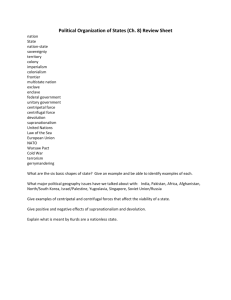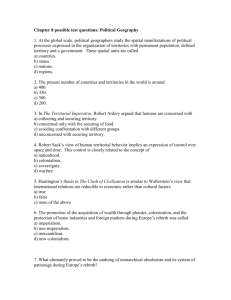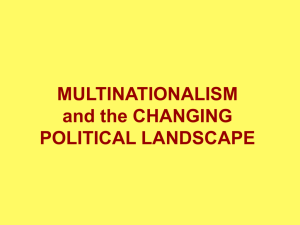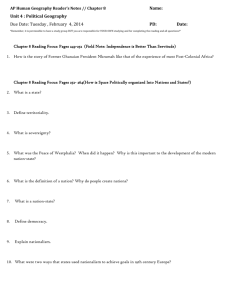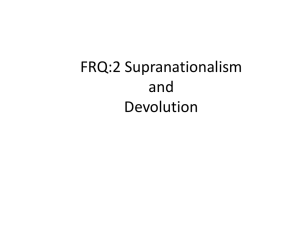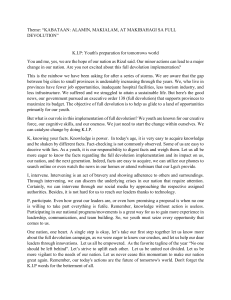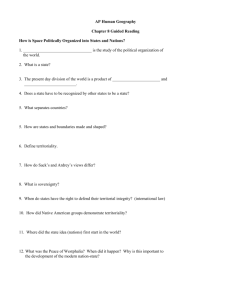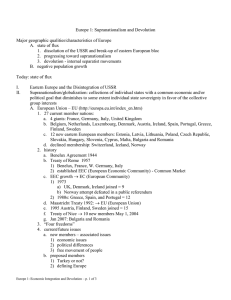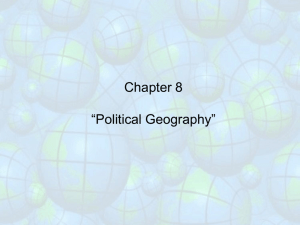Unit V - Cloudfront.net
advertisement
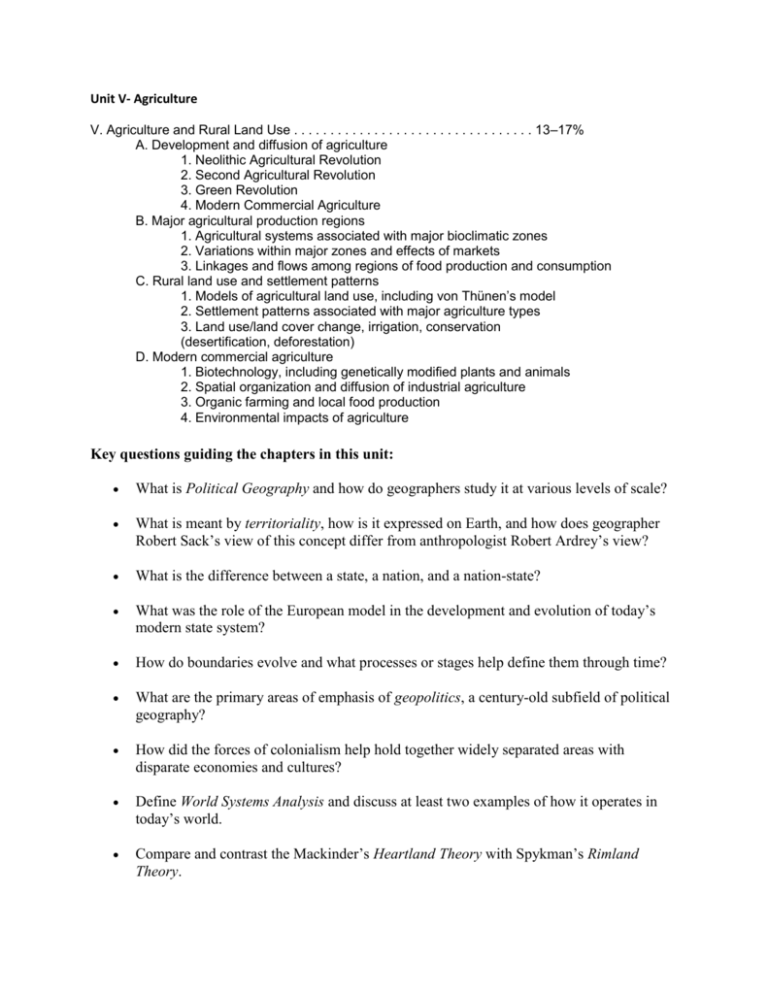
Unit V- Agriculture V. Agriculture and Rural Land Use . . . . . . . . . . . . . . . . . . . . . . . . . . . . . . . . . 13–17% A. Development and diffusion of agriculture 1. Neolithic Agricultural Revolution 2. Second Agricultural Revolution 3. Green Revolution 4. Modern Commercial Agriculture B. Major agricultural production regions 1. Agricultural systems associated with major bioclimatic zones 2. Variations within major zones and effects of markets 3. Linkages and flows among regions of food production and consumption C. Rural land use and settlement patterns 1. Models of agricultural land use, including von Thünen’s model 2. Settlement patterns associated with major agriculture types 3. Land use/land cover change, irrigation, conservation (desertification, deforestation) D. Modern commercial agriculture 1. Biotechnology, including genetically modified plants and animals 2. Spatial organization and diffusion of industrial agriculture 3. Organic farming and local food production 4. Environmental impacts of agriculture Key questions guiding the chapters in this unit: What is Political Geography and how do geographers study it at various levels of scale? What is meant by territoriality, how is it expressed on Earth, and how does geographer Robert Sack’s view of this concept differ from anthropologist Robert Ardrey’s view? What is the difference between a state, a nation, and a nation-state? What was the role of the European model in the development and evolution of today’s modern state system? How do boundaries evolve and what processes or stages help define them through time? What are the primary areas of emphasis of geopolitics, a century-old subfield of political geography? How did the forces of colonialism help hold together widely separated areas with disparate economies and cultures? Define World Systems Analysis and discuss at least two examples of how it operates in today’s world. Compare and contrast the Mackinder’s Heartland Theory with Spykman’s Rimland Theory. What role do core areas and various types of capital cities play in a state? What internal and external forces help hold states together and, conversely, tear them apart? What is supranationalism and how has it contributed to the world’s economic and political interdependence? Discuss the role of the League of Nations and later, the United Nations, in fostering international security and cooperation? What were the key provisions of the UNCLOS Process? Name at least two examples of regional multinational unions operating in Europe and discuss some of the impacts of these unifying organizations. Speculate on some of the reasons why the “most significant development of its kind in the world today”) happened first in Europe and not in some other part of the world. Why is devolution occurring in an increasing countries at the present time – and how does ethnonationalism contribute to promoting devolution? Spatially and politically speaking, why does devolution happen most often on the edges of states? Discuss devolution in the former Soviet Union/Russian Federation as a case study that illustrates some of the key concepts included in Unit V. Concepts: Annexation Irredentism Antarctica Israel/Palestine Apartheid Landlocked Balkanization Law of the Sea Border landscape Lebanon Boundary, disputes (definitional; locational; operational; Mackinder, Halford J. allocational) Boundary, origin (antecedent; subsequent; superimposed; relic) Manifest destiny Boundary, process (definition; delimitation; demarcation) Median-line principle Boundary, type (natural/physical; ethnographic/cultural; Microstate geometric) Buffer state Ministate Capital Nation Centrifugal National iconography Centripetal Nation-state City-state Colonialism Confederation Conference of Berlin (1884) Core/periphery Decolonization Devolution Domino theory EEZ Electoral regions Enclave/exclave Ethnic conflict European Union Federal Forward capital Frontier Geopolitics Gerrymander Global commons Heartland/rimland Immigrant states International organization Iron Curtain Nunavut Raison d’être Reapportionment Regionalism Religious conflict Reunification Satellite state Self-determination Shatter belt Sovereignty State Stateless ethnic groups Stateless nation Suffrage Supranationalism Territorial disputes Territorial morphology (compact; fragmented; elongated; prorupt; perforated) Territoriality Theocracy Treaty ports UNCLOS Unitary USSR collapse Women’s enfranchisement
